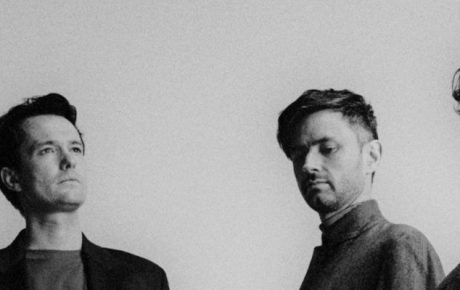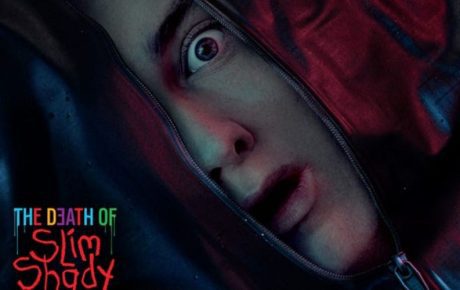In recent days of life that have peaked, the release of 1989 Taylor’s Version is very much definitely up there. Before I even start – I’ve given up on being impartial on Taylor reviews so sorry to everyone! Having watched the countdown in the office I was more than excited to say the least, though in that vein I’m very aware that when I analyzed Midnights I was very possibly quite wrong as it now seems to be the breakup album. And now that’s on the internet forever, so there’s that.
With that said.. 1,2,3 let’s go Swifties!
View this post on Instagram
With the ongoing re-recording era, fans are undoubtedly being treated to a nostalgia trip through Taylor’s many, genre-shifting past moments. From the distinctly country self-titled, to the more mixed iconic Red, these new versions are even more powerful than the originals, and 1989 TV is no exception. The drop of 1989 strongly symbolized Taylor’s complete movement from her country roots, cementing her as one to watch in pop. To receive Taylor’s matured voice on this album is not only a gift, but a deep source of excitement. Swift is now one step closer to reclaiming her catalogue – all that’s left is her name and her reputation (and there is much speculation over which will come first).
It would be an injustice to not speak about all our favorite 1989 originals here. For those eagle-eared fans, one of the primary differences between TV and the original is a very slight shift in production. With Christopher Rowe recruited to take the reins, the sound in the classics is both smoother and slightly brassier. Overall, there’s not a huge change across the first 16 tracks, as Swift intended. Although using subtle tweaks to enhance the bridges of ‘I Know Places’ and ‘Bad Blood’, alongside a generally more velvety vocal, Taylor for the most part honors the roots of 1989, rather than delivering the dramatic sonic changes that were at times present on Red TV.
View this post on Instagram
Before the official release of 1989 TV, Swift released ‘This Love’ and ‘Wildest Dreams’ to streaming platforms. Giving enough of a taste to those hungry for content, both songs have been featured in various pieces of media recently.
Many fans speculated the potential of a Harry Styles collaboration on 1989 TV, however the only one present is Kendrick Lamar’s reappearance on ‘Bad Blood.’ The tune has long been a classic, and Lamar’s presence once again takes it to triumphant new heights.
‘Sweeter Than Fiction’ is also available on the Target edition – which came as a sweet surprise. The track was written for the ‘One Chance’ soundtrack, the biographical movie about BGT winner Paul Potts. ‘Sweeter Than Fiction’ remains in this new version, upbeat, romantic and joyous. Swift dedicated this new version on Instagram to longtime friend Jack Antonoff, describing it as the first song they ever created together, symbolizing the beginning of what is now one of music’s most iconic partnerships. ‘Sweeter Than Fiction’ starring on 1989 TV (deluxe) really drives home the magic the two create, especially considering it was originally a standalone single.
View this post on Instagram
First up on the vault tracks this time around we have ‘Slut.’ Since its announcement, fans like me have gravitated in curious apprehension towards this song as being potentially the one on the album. Especially when you consider the checkered history of Taylor being slut-shamed in the media, the tone of the song could have gone either way. It’s almost uncaring, with Taylor shaking off the false images and painting a picture of a woman who will still make her choices regardless of public opinion. She sings ‘if they’re going to call me a slut, it might as well be worth it for once,’ against mid-tempo, seductive synths. By romanticizing her relationship and its importance, she reclaims the term while simultaneously rebelling against it. However despite the powerful chorus, the song also calls out the media’s behaviour during this era of her life in the second verse. Overall, Swift once again channels multiple statements into a single track in a fashion which feels juxtaposed yet effortless. ‘Slut’ also provides Easter eggs to the album’s physical copies, with the phrases ‘flamingo pink’ and ‘tangerine’ scattered throughout, as part of Swift’s characteristically beautiful descriptions. Fans can purchase both ‘tangerine’ and ‘flamingo’ vinyl from the official store now.
‘Slut’ is followed by ‘Please Don’t Go.’ Within a few moments of the opening track, the first comparison that came into my head was Midnights‘ bonus track ‘You’re Losing Me.’ ‘Please Don’t Go’ is a clear sister track, particularly when thinking about ‘YLM’s lyrics ‘do something babe, say something / lose something babe, risk something’ and ‘PDG’s ‘I’m holding out hope for you to say don’t go.’ Both tracks echo unrequited love, but in the sense that love becomes unrequited when the effort in a relationship is falling apart at the seams. The references to tightropes and holding out hope both echo someone on their last attempt at being saved, and it’s not hard to imagine they might have been written in the same timeframe. Anyway, if anyone needs me, I’ll be listening to this one with a very large tissue box.
‘Now We Don’t Talk’ is haunting but in a different way. Through this track, Taylor effortlessly paints an image of someone watching another’s life from the outside. Going through the motions of noticing important events passing without you, song examples include new hairstyles and ‘new icons.’ The gravity of the relationship is emphasized with verse 1’s line ‘you part crowds like the Red Sea, don’t even get me started.’ As the track progresses, the emotional weight of trying to find yourself again finally gives way to a triumphant self-acceptance. With finally finding that dignity, the relationship’s importance fades into the muted past. The struggle is juxtaposed by the twinkly, synthy instrumentals, and despite being Tay’s shortest song to date, still packs a punch. Play this one when you want to remind yourself why you are, in fact, better off without your ex.
Some loves are too powerful to last without imploding, and ‘Suburban Legends’ details one of those. With the line ‘you kissed me in a way that’s gonna screw me up forever’, the whole song resonates of destiny and love that transcends ordinary boundaries. By affirming the profound impact of this connection, ‘Suburban Legends’ is yet another example of Swift masterfully creating complex imagery in her lyrics. Eagle-eared listeners may notice the reference to the Eras tour countdown in the outro’s mention of ‘tick tock on the clock.’
I think anyone still reading will know I’m big on the references by now, and ‘Is It Over Now’ reminds me of one of my other favorite artists, Maisie Peters. Specifically, her song ‘Lost the Breakup.’ Does anyone else hear ‘you’ve got two types country and western’ in ‘your new girl is my clone?’ ANYONE? Maybe just me. Between the drum machine beats though, ‘IION’ also complements ‘Style’ in its instrumental makeup. In the midst of the relationship’s end, Swift presents herself as reckless and melodramatic, especially in the line ‘I think about jumping off very tall somethings just to see you come running.’ The princess fantasy of youth that is painted in some of her more upbeat music is promptly turned into one of a damsel in distress, where her first instinct is uncharacteristically to vie for attention in the midst of heartbreak.
With the emotional content presented in these vault tracks, fans are able to deeply connect with Swift. Not only this, but the storytelling she provides allows them to do one of the things they do best – directly pinpoint the villains and perpetrators in the storylines she weaves. From the red scarf of Jake Gyllenhaal in Red to John Mayer and Speak Now, Harry Styles is clearly in the bullseye this time around. ‘Is It Over Now’ truly emphasizes this with its direct references to famous paparazzi shots of the two at the time.
Ultimately, the real message of 1989 TV is the same as the original. This thesis statement can be summed up in one line from ‘Slut’, in which Taylor says ‘being this young is art.’ With the arrival of 1989 TV, Taylor has successfully and powerfully taken us back to those days in 2014. 1989 was an era during which so many fans were growing up beside Taylor and experiencing many of the turbulent emotions expressed on this album. The highs and lows of Taylor’s early 20s are effortlessly captured through the lens of grand love in all its forms, and the shattering heartbreaks that come with them. In this, it’s little wonder that the original is one of her most successful, and no doubt 1989 TV will be too.












